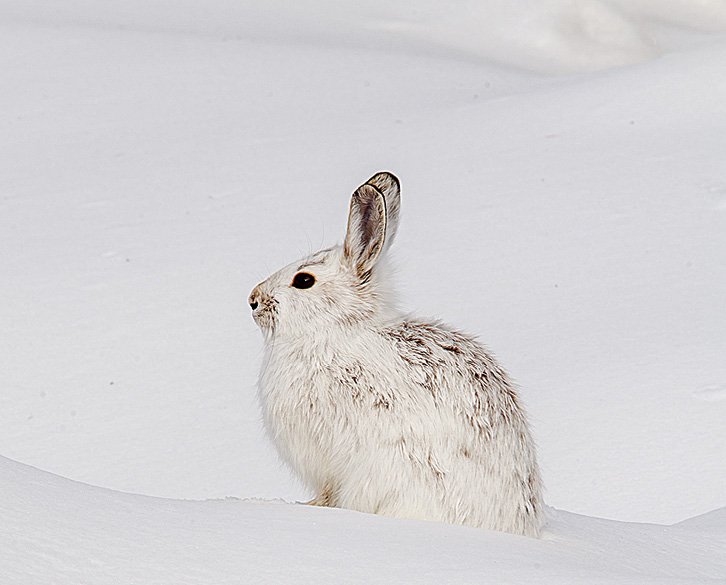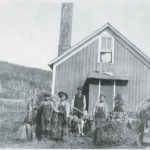When you think of winter animals across the north country, you might envision chickadees, wolves, deer or even some boreal bird species that show up here in winter, only to migrate back north come spring. But few species are more iconic or better adapted to our long, snowy winters than the snowshoe hare.
If the name “snowshoe” isn’t enough to make you think winter, consider the fact these hares completely replace their summer brown pelage with white fur—the perfect camouflage to help them blend into a snowy landscape. Although their feet remain white year-round, starting in fall, white hairs gradually replace brown ones over the course of about 10 weeks. In spring, the process reverses.
Snowshoe hares also have large hind feet lined with stiff hairs that act like snowshoes, helping them move across snow without sinking. This helps them navigate the coniferous forests they frequent and to outrun predators, such as bobcats, lynx, coyotes, wolves and foxes.
But even though snowshoes are “winter’s animal,” even hares go a little stir crazy by the end of a long winter. This leads to one of the most entertaining spectacles in our Northern Wilds. Around March, male hares (called bucks) begin to feel their oats and make advances toward females (does).
But does don’t simply swoon and fall for their prospective mates. Instead, they stand up and fight! The female rears up on her hind feet and boxes with the male. Both combatants stand erect and bat forefeet with each other. They chase each other around, looking for an advantageous place to duke it out. If things get really heated, one may even leap in the air and land on top of the other. Fur flies and tracks pockmark the snowy dance floor. The male may take a real drubbing, because females are slightly larger. But if he backs down, he has no chance of getting what he wants.
But why do hares do this? It’s not known for certain why female hares act this way (and this behavior is not unique to snowshoes; other hare species “box” as well). For one thing, the female is likely not yet ready to breed and she’s fighting off the male’s advances. But also, it seems she may simply be testing him to learn his degree of fitness and see if he is a worthy mate. The fact that sometimes mating occurs after these fights lends credence to that theory. It’s likely a little bit of both.
This behavior is interesting because often males fight other males for the right to breed and the winner gets the spoils. But with hares, the female gets the final say. Hmm, seems like another species I know.
Another interesting fact is that female hares are induced ovulators, which means they start ovulating when they have sex, which pretty much guarantees they are impregnated. They give birth about 35 days after copulation. A typical litter is two to four “leverets,” although sometimes does give birth to as many as eight. The leverets are born fully furred and with their eyes open. In contrast, rabbits are born with their eyes shut and without fur. Hares typically have two to three litters a year, and males attempt to mate with females immediately after giving birth. The young leverets are on their own after just a month.
So, if cabin fever is making you feel “mad as a March hare,” know you’re not alone. It might be time to get outside. Just try not to throw any punches.






